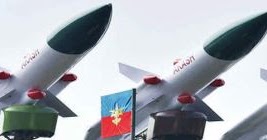Ready To Fight With Indigenous Arms: Army Vice Chief
At a time when self-reliance in the defence sector is a top priority for the government, army vice chief Lieutenant General SK Saini on Monday said developing indigenous capabilities to face security challenges was imperative because during crunch situations, technologies developed by other countries would either not be available or be at the cost of India’s strategic autonomy.
At a Federation of Indian Chambers of Commerce and Industry (FICCI) webinar, Saini assured the industry of the army’s unequivocal commitment to the Make in India initiative and sought to dispel the notion that the force has an import bias. He said the army was more than ready to fight with locally produced equipment provided it passed stringent quality tests and manufacturers adhered to delivery timelines.
Saini said it was critical to equip the army with the best weapons and systems to fight its adversaries as heavy costs were imposed on the runner-up.
“Self-reliance in defence production through advanced technologies and manufacturing capacity consolidated indigenously and expeditiously will be imperative for an effective and independent foreign policy,” said former army vice chief Lieutenant General AS Lamba (Retd).
The army is pursuing a raft of projects through the indigenous route including third-generation anti-tank guided missiles, upgrades of infantry combat vehicles, precision ammunition, tank ammunition, drone kill systems and a variety of radars.
In his Independence Day speech, Prime Minister Narendra Modi covered the significance of self-reliance in the defence sector and steps being taken to attain the goal. He said the government had imposed an import ban on 101 types of weapons and ammunition — from missiles to transport aircraft and assault rifles to light combat helicopters --- to provide a push to self-reliance in the defence sector.
The military hardware on the negative import list, released by the government on August 9, includes assault rifles, sniper rifles, short-range surface-to-air missiles, beyond visual range air-to-air missiles, corvettes, missile destroyers, ship-borne cruise missiles, light combat aircraft, a variety of radars and different types of ammunition.
Speaking at the webinar, Raj Kumar, secretary, defence production, said the government was working on the second negative import list of defence items and it would be expanded periodically.
He said that the announcement of the first set of embargoed items on imports would accelerate the process of indigenisation.
“Industry will also have to meet the needs of future wars with future products. The industry will now have to shoulder the responsibility of catering to the requirements of embargoed items domestically,” a FICCI statement quoted Kumar as saying.
Kumar said the domestic defence industry would hold online interactions with the representatives of friendly countries to understand their defence needs, and country-wise profiles of weapons and systems they may require would be prepared to promote exports.
From raising foreign direct investment (FDI) limits in defence manufacturing to creating a separate budget for buying locally made military hardware and notifying a list of weapons/equipment that cannot be imported, the government had announced a raft of measures to boost self-reliance in the defence sector in May 2020.
Imports account for 60-65% of the country’s military requirements and it has signed contracts worth billions of dollars during the last decade for weapons and systems including fighter jets, air defence missile systems, submarine hunter planes, attack helicopters, heavy-lift choppers and lightweight howitzers.
India was the third-biggest military spender in the world last year after the United States and China, the Stockholm International Peace Research Institute (SIPRI) said in a report released in April.
Army vice chief Lieutenant General SK Saini said it was critical to equip the army with the best weapons and systems to fight its adve...

www.indiandefensenews.in



